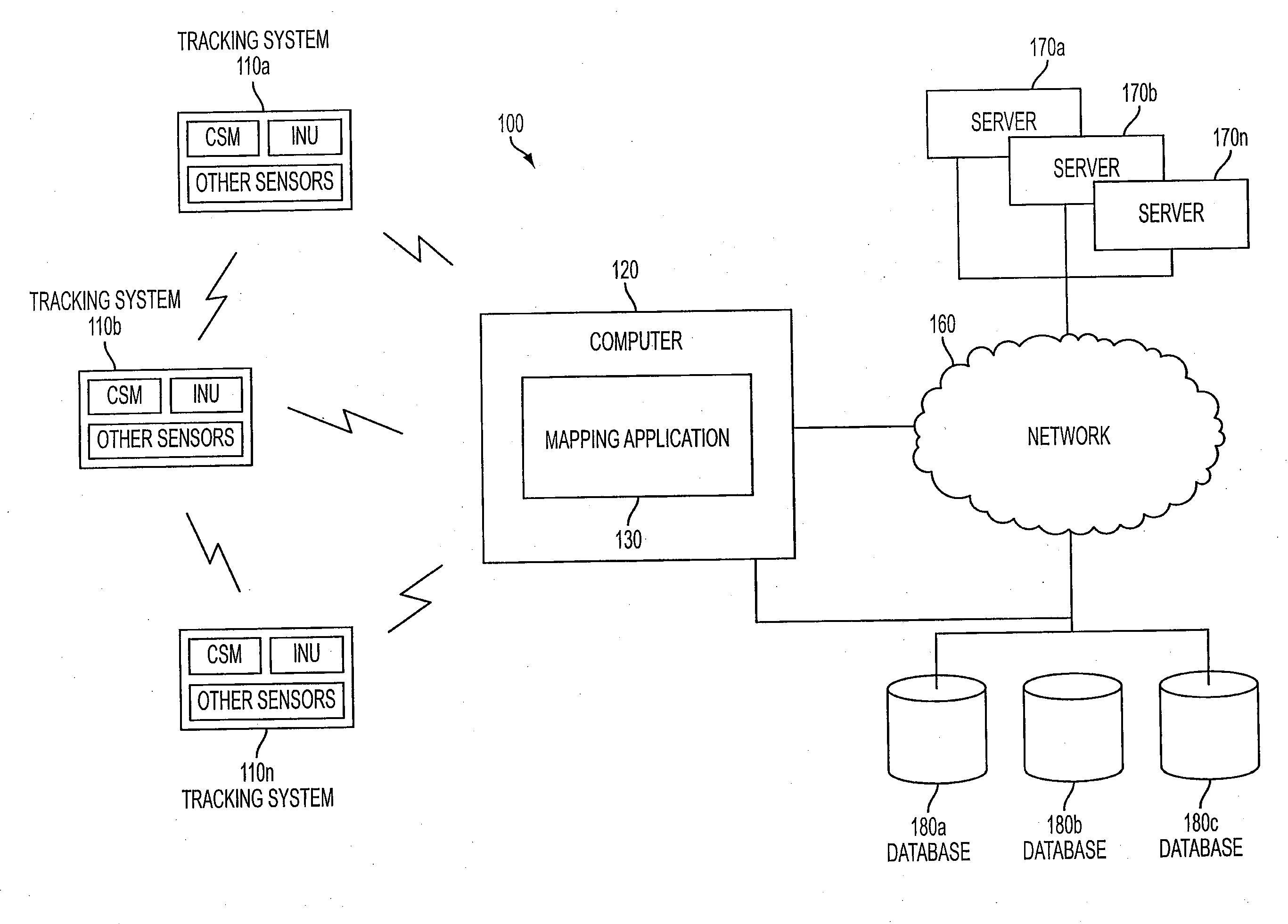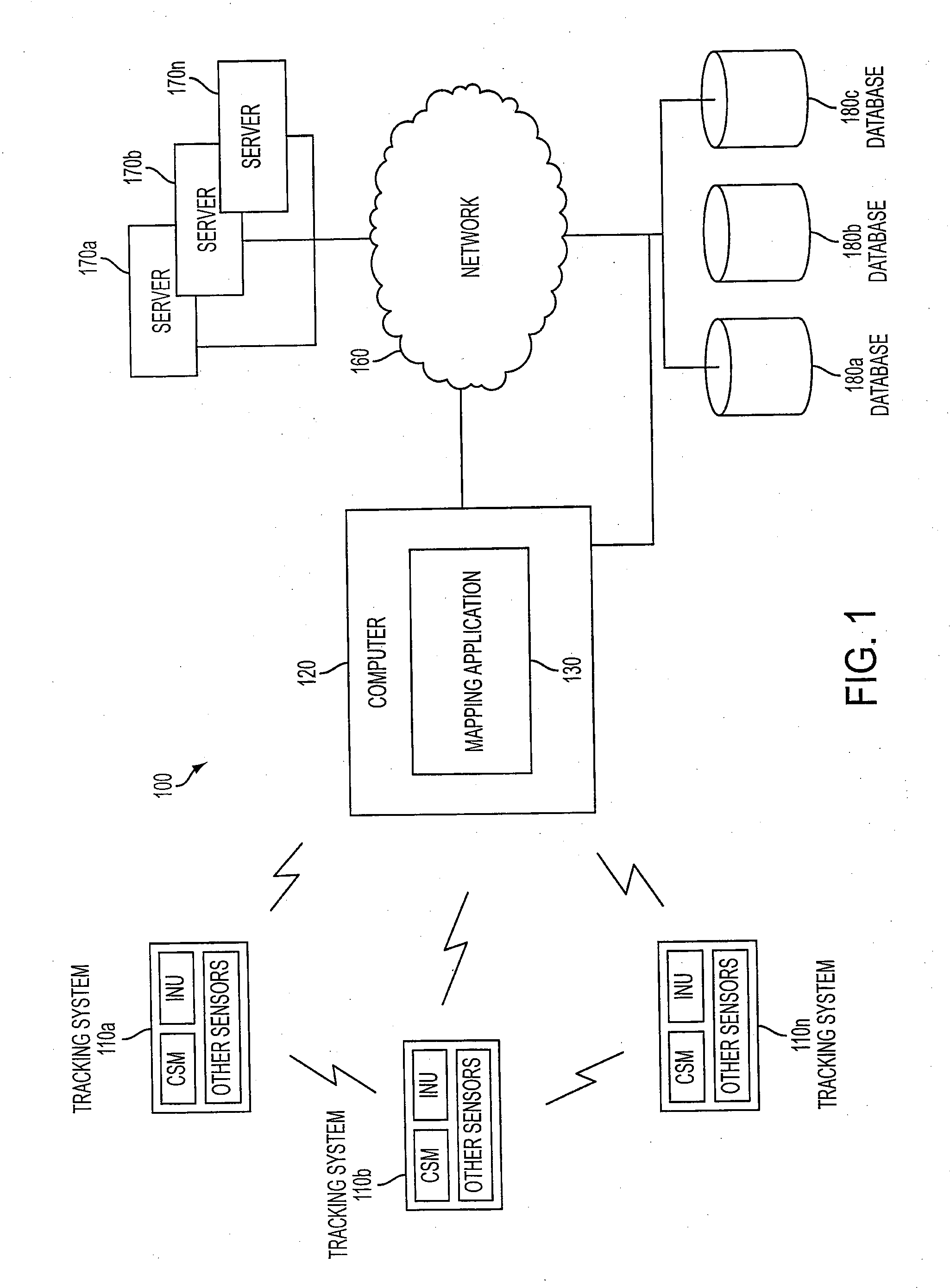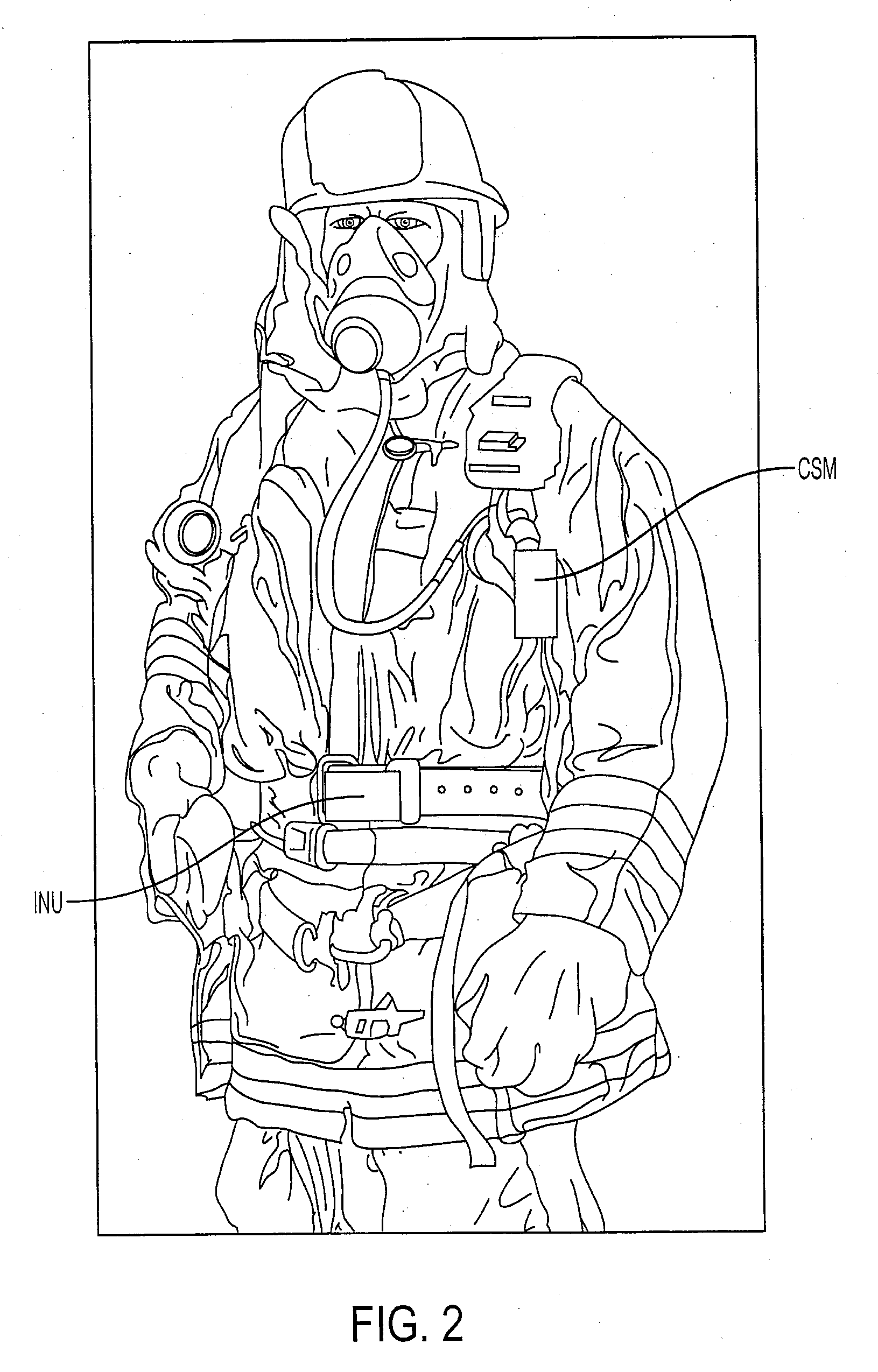System and method for locating, tracking, and/or monitoring the status of personnel and/or assets both indoors and outdoors
- Summary
- Abstract
- Description
- Claims
- Application Information
AI Technical Summary
Benefits of technology
Problems solved by technology
Method used
Image
Examples
Embodiment Construction
[0064]The invention described herein is directed to a system and method for locating, tracking, and / or monitoring the status of personnel and / or assets, both indoors and outdoors.
[0065]As a general overview, an exemplary system architecture will first be provided, followed by a discussion of the various types of input that may be provided to the mapping software application disclosed herein. In some instances, the mapping software application may be referred to interchangeably herein as “mapping software” or “mapping technology.” An overview of the features and functionality enabled by the mapping software application will then be described, followed by a discussion of various mapping techniques and tools. A description of various indoor tracking methods and outdoor tracking methods will also be provided.
[0066]I. Exemplary System Architecture
[0067]FIG. 1 depicts an exemplary system architecture 100, according to an aspect of the invention. In one implementation, one or more tracking...
PUM
 Login to View More
Login to View More Abstract
Description
Claims
Application Information
 Login to View More
Login to View More - R&D
- Intellectual Property
- Life Sciences
- Materials
- Tech Scout
- Unparalleled Data Quality
- Higher Quality Content
- 60% Fewer Hallucinations
Browse by: Latest US Patents, China's latest patents, Technical Efficacy Thesaurus, Application Domain, Technology Topic, Popular Technical Reports.
© 2025 PatSnap. All rights reserved.Legal|Privacy policy|Modern Slavery Act Transparency Statement|Sitemap|About US| Contact US: help@patsnap.com



